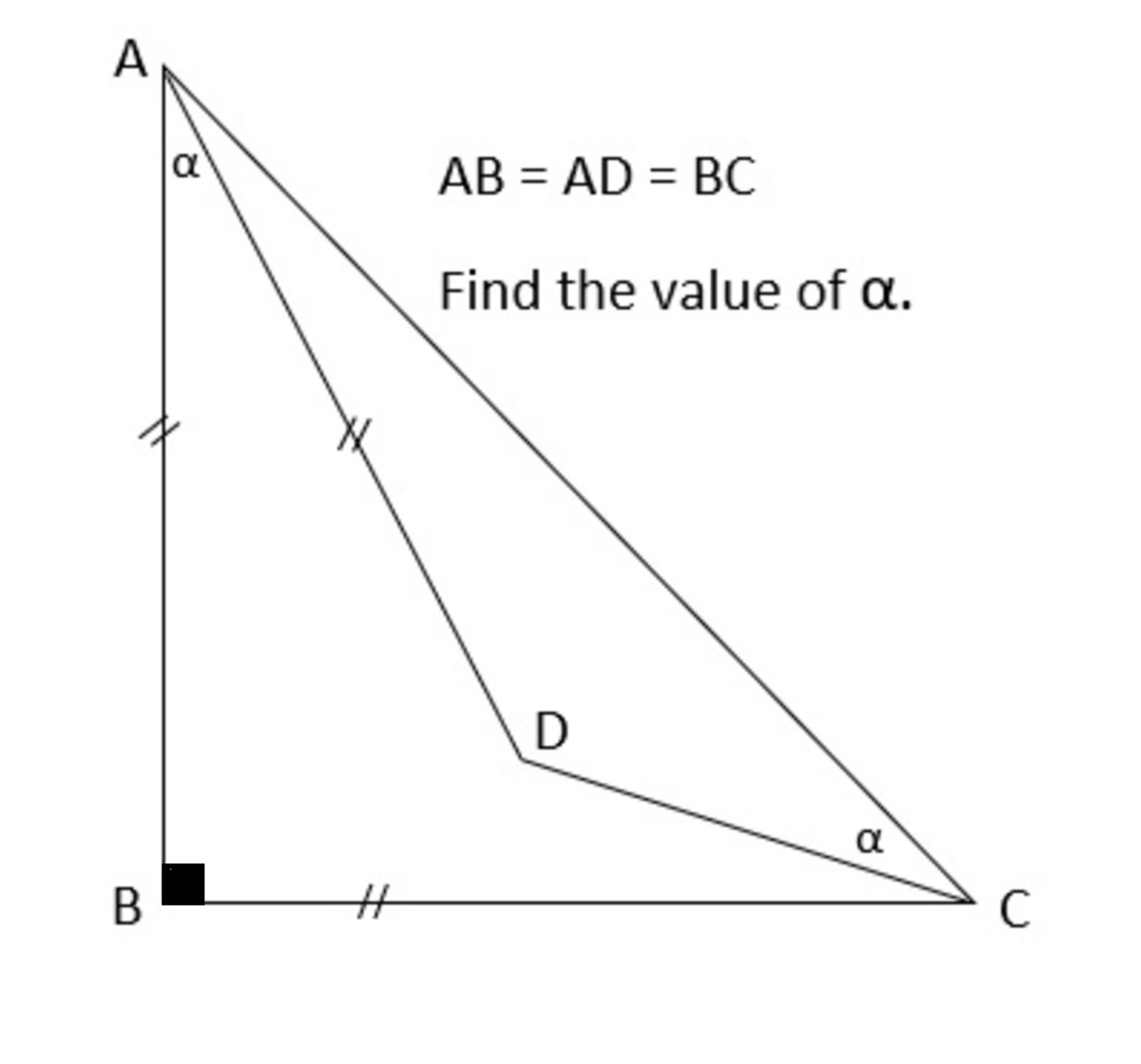This section requires Javascript.
You are seeing this because something didn't load right. We suggest you, (a) try
refreshing the page, (b) enabling javascript if it is disabled on your browser and,
finally, (c)
loading the
non-javascript version of this page
. We're sorry about the hassle.
2 solutions
Let x = A B = B C = A D . Since △ A B C is a right isosceles triangle, ∠ B A C = 4 5 ° and A C = 2 x .
∠ D A C = ∠ B A C − ∠ B A D = 4 5 ° − α .
By the sum of the angles in △ D A C , ∠ A D C = 1 8 0 ° − ∠ D A C − ∠ D C A = 1 8 0 ° − ( 4 5 ° − α ) − α = 1 3 5 ° .
By the law of sines on △ A D C , A D sin ∠ D C A = A C sin A D C , or x sin α = 2 x sin 1 3 5 ° , which solves to sin α = 2 1 , so α = 3 0 ° .

△ A B C is isosceles right triangle, hence ∠ B A C = ∠ B C A = 4 5 ∘ .
Consequently, ∠ D A C = ∠ B A C − ∠ B A D = 4 5 ∘ − ∠ α = ∠ B C A − ∠ D C A = ∠ B C D . This means that B C is tangent to circle c , thus, C K ⊥ B C ( 2 )
( 1 ) , ( 2 ) , combined with the fact that ∠ A B C = 9 0 ∘ and A B = B C give us that A B C K is a square.
Since A B = A D = A K , D lies on the intersection of circle c and the quadrant K B of center A . This implies that △ A D K is equilateral, hence, ∠ K A D = 6 0 ∘ .
Finally, α = ∠ B A D = ∠ K A B − ∠ K A D = 9 0 ∘ − 6 0 ∘ = 3 0 ∘ .